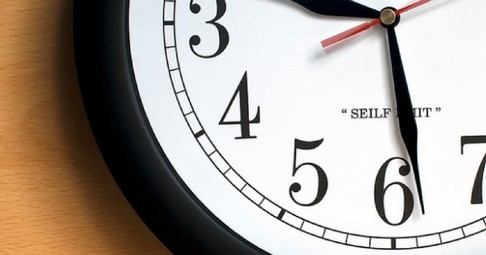Spring Ahead? Why Daylight Savings Time is Dangerous
Pointless government tampering of natural world.
If you hate daylight saving time and the confusion and sleep deprivation it brings, you now have solid data on your side. A wave of new research is bolstering arguments against changing clocks twice a year.
The case for daylight saving time has been shaky for a while. The biannual time change was originally implemented to save energy. Yet dozens of studies around the world have found that changing the clocks has either minuscule or nonexistent effects on energy use. When Indiana finally implemented daylight saving in 2006, residents actually used more electricity.
Daylight saving time isn’t just a benign relic of the 1970s energy crisis. The latest research suggests the time change can be harmful to our health and cost us money. The effects are most disruptive in the spring and fall, right after time changes. Clocks in the US will spring forward this year on Sunday. Most of Europe moves to daylight saving time two weeks later.
The suffering of the spring time change begins with the loss of an hour of sleep. That might not seem like a big deal, but researchers have found it can be dangerous to mess with sleep schedules. Car accidents, strokes, and heart attacks spike in the days after the March time change. It turns out that judges, sleep deprived by daylight saving, impose harsher sentences.

‘‘Even mild changes to sleep patterns can affect human capital in significant ways,’’ Cornell University researchers Lawrence Jin and Nicolas Ziebarth wrote last year.
Some of the last defenders of daylight saving time have been a cluster of business groups who assume the change helps stimulate consumer spending. That’s not true either, according to recent analysis of 380 million bank and credit-card transactions by the JPMorgan Chase Institute.
The study compared Los Angeles with Phoenix in the 30 days after the March and November time changes. Arizona is a natural test case since it’s one of the two states, along with Hawaii, that doesn’t do daylight saving. In the spring, according to the consumer transaction data, the additional hour of evening daylight in Los Angeles managed to slightly boost card spending per person, compared with that in Phoenix, although by less than 1 percent. That spending uptick is swamped by the negative impact of the November time change, which sees the darkened population of Los Angeles spend 3.5 percent less at local retailers.
Daylight turns out to be a surprisingly large factor in how often workers stop at stores on their way home from their jobs in the evening. ‘‘At the end of the day, it’s either dark or light, and [people are] going to make an impulse decision at that point,’’ Diana Farrell, president and chief executive of the JPMorgan Chase Institute.
One possible explanation for the sharp spending decline, Farrell said, is that the extra hour of darkness could push more people to shop online rather than in-person. The study looked only at transactions via local retailers.
Daylight saving time may threaten our health, hurt local retailers, and otherwise disrupt our lives. But can anything be done about it?
As Hawaii and Arizona show, the US government gives states a choice as to whether to adopt daylight saving time. But states aren’t currently allowed to switch to daylight saving time year-round. Last year, 19 bills were pending in state legislatures around the US to end the biannual time change, according to the National Conference of State Legislatures. None passed.
Daylight saving is ‘‘an example of how sticky policy can be,’’ Farrell said.
A bill signed by Governor Charlie Baker in August included a provision establishing a task force to study if Massachusetts should leave Eastern Standard Time behind. The commission would analyze putting the state on Atlantic Standard Time throughout the year, rather than springing forward every March and falling back every November.
And since the beginning of the year, state legislators elsewhere have introduced an 20 bills on the topic, according to the National Conference of State Legislatures. Eleven bills, including proposals in Texas and California, would put states permanently on standard time; nine of the bills aim to make daylight saving time permanent, many of them by urging lawmakers in Washington to change the rules.
That looks unlikely. In a search of bills pending in the Congress this year and last year, none mention daylight saving.





